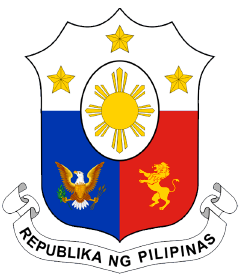Are you a registered overseas voter? Watch COMELEC’s new informercial HERE.
The Philippine Abaca Industry
Abaca is native to the Philippines and is one of the country’s 35 fibercrops. It is considered as the “strongest natural fiber in the world” by the Philippine Department of Science and Technology and the Philippine Fiber Industry Development Authority (PhilFIDA).
The Philippines supplies 87.5 % of the world’s requirement for Abaca fiber and as such is the number one supplier worldwide. An important edge that the Philippine abaca fiber has over those produced by countries like Ecuador and Costa Rica is that it has several different grades. The Philippines has nine grades/classifications of abaca fiber compared to only five of Ecuador, making Philippine abaca more versatile in applications, and it possesses the full spectrum of the quality of abaca that specialty paper manufacturers need.
Aside from its various uses and its superior strength, the Abaca fiber helps meet the growing demand for environment-friendly material, being a natural fiber. Waste materials from Abaca are useful, too, as fertilizer. The Abaca plant is also good to the environment as it helps improve the water holding capacity of the soil, thereby preventing soil erosion, floods and landslides, and addresses sedimentation problems in coastal areas where sea fishes breed.
Farming is one of the major livelihood in the Philippines and Abaca farming is the source of livelihood of about 200,000 farming families in 56 provinces in the Philippines. The key abaca-producing areas nationwide are the Bicol Region and Mindoro in Luzon; Leyte, Samar, Negros Oriental, Iloilo and Aklan in the Visayas; and all the provinces of Mindanao. Davao and some parts of Mindanao are gearing to become the major producer of abaca by 2022 and many idle and unproductive lands of private sectors and the Indigenous People are to be developed with that end in view.
Much, if not all, of the land areas for abaca farming are being shared with other crops, most commonly banana and coconut. This is because these crops are grown in almost the same conditions as abaca. Thus, farmers tend to do intercropping to maximize use of the land and provide alternative sources of income. Only 2 percent of the abaca farms are cultivated with root crops.
The manner by which Abaca is extracted (hand-stripped or spindle-stripped) and its fiber grade (which is based on cleaning) determine the price of abaca fiber in the Philippines. As a traded commodity, the price of abaca fiber is also dependent on market forces. Unfortunately, production of Abaca can be affected by typhoons, and the Philippines happens to be located along the typhoon belt.
In 2006 – 2016, production of abaca fiber had averaged at 67,329 MT, with production having peaked at 77,389 MT in 2008. Domestic processors used about 49,260 MT or 76.51 % of the country’s average yearly production of abaca to make it into pulp, cordage and various fibercraft items, including furniture. For more or less the same period, the Philippines generated an average of US$100 million per year from the exports of abaca fiber and manufactures. Some 87% came from abaca manufactures such as pulp, cordage, yarns, fabrics and fibercrafts, while the rest (13%) came from raw fiber exports. Among the abaca manufactures, pulp continued to lead exports into 2019, representing 78.60% share of the earnings of that year.
In 2018, PhilFIDA launched the “Abaca Tuxy Buying Project,” which aimed to “organize and empower” Abaca farmers, through the forming of cooperatives that produce quality Abaca more efficiently and at competitive prices. Through the cooperatives, the project hoped to increase Abaca production and facilitate the direct selling of their harvest to Grading-Bailing Establishments (GBEs) and local processors.
For more information on the Philippine Abaca, please visit the website of the Philippine Fiber Industry Development Authority3 (PhilFIDA): www.philfida.da.gov.ph.
Sources:
The Philippine Fiber Industry Development Authority website: www.philfida.da.gov.ph
Philippine Abaca Industry Road Map 2018-2022 (PhilFIDA), https://www.da.gov.ph/downloadables/
PhilFIDA Presentation: The Philippine Abaca Industry: Trends, Prospects and Challenges
https://www.facebook.com/PhilFIDA/
Realliving, 21 May 2020, Shopping Guide, https://www.realliving.com.ph/shopping-services/shopping-guide/abaca-face-masks-a00339-20200521
https://www.goodnewspilipinas.com/abaca-face-mask-developed-in-misamis-oriental-gets-dost-nod/
https://www.rappler.com/nation/261921-mindanao-trademark-abaca-paper-face-mask
https://www.esquiremag.ph/culture/design/abaca-face-masks-a00202-20200522
http://www.fao.org/economic/futurefibres/fibres/abaca0/en/
Photo source: PhilFIDA (unless otherwise stated).
____________________
3 PhilFIDA is a government agency under the Philippine Department of Agriculture which is mandated to “promote the growth and development of the natural fiber industry through research, development, production support, extension support, education and training services, fiber utilization and technology and standards implementation and trade regulation.”
